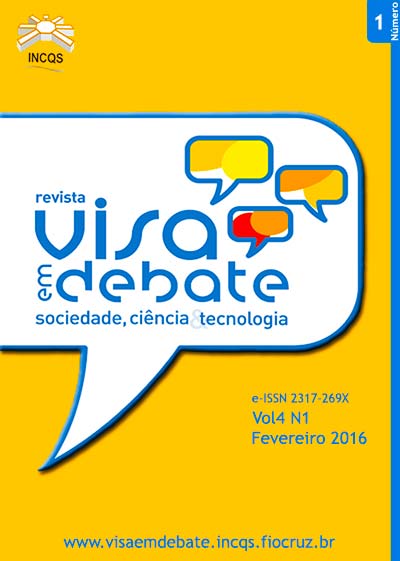Cianobactérias e microcistina em águas de rio destinadas ao abastecimento de centro industrial de Caruaru, PE, Brasil
DOI:
https://doi.org/10.3395/2317-269x.00602Palavras-chave:
Cianobactéria, Água, Microcistina, CLAE, IpojucaResumo
As cianobactérias são responsáveis pela produção de cianotoxinas que, uma vez acumuladas, podem causar sérios danos à saúde humana e animal. As microcistinas são o tipo mais comum de cianotoxinas e são promotoras de tumores hepáticos. O objetivo deste trabalho foi verificar a ocorrência de cianobactérias e determinar a presença da toxina microcistina em amostras de água do rio Ipojuca no perímetro da cidade de Caruaru, PE, Brasil. Amostras de água foram coletadas em cinco pontos estratégicos deste manancial durante treze meses consecutivos. Para a pesquisa de cianobactérias, foi utilizado o método de sedimentação de Utermöhl para quantificação e identificação das espécies. Para a pesquisa de microcistina foi utilizada a Cromatografia Líquida de Alta Eficiência (CLAE). Os resultados mostraram três gêneros produtores de microcistinas e a presença desta toxina em 100% das amostras analisadas, confirmando a relevância do monitoramento de cianobactérias e cianotoxinas em águas de abastecimento público, pois assim como o rio Ipojuca, vários mananciais de Pernambuco apresentam florações de cianobactérias que podem ser tóxicas. Este trabalho mostrou a importância do estudo destes organismos e a detecção de suas toxinas fornecendo subsídios às ações preventivas de vigilância ambiental em saúde.Downloads
Downloads
Arquivos adicionais
Publicado
Edição
Seção
Licença
Copyright (c) 2016 Vigilância Sanitária em Debate: Sociedade, Ciência & Tecnologia (Health Surveillance under Debate: Society, Science & Technology) – Visa em Debate

Este trabalho está licenciado sob uma licença Creative Commons Attribution-NonCommercial-NoDerivatives 4.0 International License.
TERMO DE CESSÃO DE DIREITOS AUTORAIS O(s) autor(es) doravante designado(s) CEDENTE, por meio desta, cede e transfere, de forma gratuita, a propriedade dos direitos autorais relativos à OBRA à REVISTA Vigilância Sanitária em Debate: Sociedade, Ciência & Tecnologia (Health Surveillance under Debate: Society, Science & Technology) – Visa em Debate e, representada por FUNDAÇÃO OSWALDO CRUZ, estabelecida na Av. Brasil, nº 4365, Manguinhos, Rio de Janeiro, RJ, Brasil, CEP 21045-900, doravante designada CESSIONÁRIA, nas condições descritas a seguir: 1. O CEDENTE declara que é (são) autor(es) e titular(es) da propriedade dos direitos autorais da OBRA submetida. 2. O CEDENTE declara que a OBRA não infringe direitos autorais e/ou outros direitos de propriedade de terceiros, que a divulgação de imagens (caso as mesmas existam) foi autorizada e que assume integral responsabilidade moral e/ou patrimonial, pelo seu conteúdo, perante terceiros. 3. O CEDENTE cede e transfere todos os direitos autorais relativos à OBRA à CESSIONÁRIA, especialmente os direitos de edição, de publicação, de tradução para outro idioma e de reprodução por qualquer processo ou técnica. A CESSIONÁRIA passa a ser proprietária exclusiva dos direitos referentes à OBRA, sendo vedada qualquer reprodução, total ou parcial, em qualquer outro meio de divulgação, impresso ou eletrônico, sem que haja prévia autorização escrita por parte da CESSIONÁRIA. 4. A cessão é gratuita e, portanto, não haverá qualquer tipo de remuneração pela utilização da OBRA pela CESSIONÁRIA.







